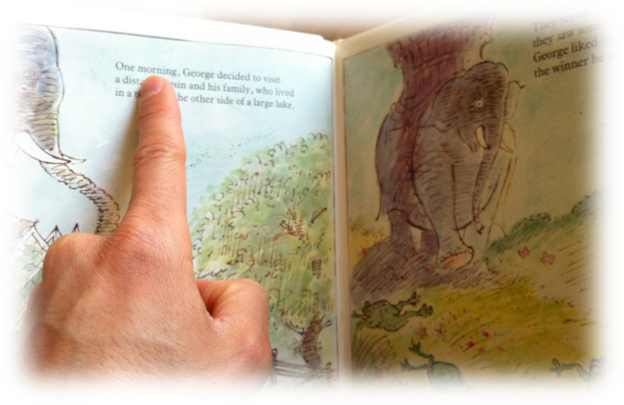Build Reading Skills in Kids with Expressive Language Disorder
It’s on the tip of my tongue! Have you ever felt this way? Kids with expressive language disorders often feel this sensation – that they should know what to say but they just can’t seem to find the right words. Expressive language disorders often mean that kids display the following symptoms:
- Speaking in short, choppy sentences with limited vocabulary
- Using a vocabulary that is below grade level
- Repeating parts or the entirety of questions
- Using um, ah, well, repeatedly as they search for the “right” word
- Confusing tenses (past, present, future) in conversations
Photo: Grape Tongue by Alexander von Halem
There are several techniques that SLPs use to help children develop the skills necessary to meet the challenges of their expressive language disorders. Reading is just one area that causes struggles for those with this disorder. Imagine not being able to process the phonetics needed in order to understand how to sound out words. Various studies put the number of children who struggle with literacy as part of their expressive language disorder at up to 75%. When it comes to reading skills in kids with expressive language disorders, there are activities that can be utilized in the classroom as well as at home to improve these literacy skills.
Expressive Language Disorder – Activities for Improved Literacy Skills
Read Books Together that Encourage Interaction
There are several great books selections that require the reader to pause and consider questions, create strategies ahead of time for reading, and break reading down into manageable pieces. Some effective options include:
- Lee & Low Books – I found this publishing company when I was helping a struggling reader and the resources and techniques are incredibly effective for various literacy issues. The books are structured at different reading levels and use approaches such as patterned sentences and picture clues for text. The Bebop series offers free PDF lesson plans that teach you how to use the book with the child, including questions to ask the child and preparation to do before reading the book.
- Can You Guess? By Margaret Miller – Miller actually offers several books of a similar genre, and this is just one title that is effective for engaged reading. The pages show color photographs and the readers are given a question – and then several outlandish possible answers before the actual answer is revealed.
Take Turns Reading
Kids who struggle with literacy can feel overwhelmed by more than picture books, but if we don’t find ways to make reading approachable, they risk missing out on too many wonderful literature opportunities. Take turns reading with your child from the same story. Read slowly and enunciate clearly, sliding your finger under each word as you read. If you see your child struggling on his turn, perhaps misreading a sentence, just gently say something such as, “Let’s take another try at that sentence.” If the sentence is misread again, offer a clue and gentle encouragement.
Give Them the Word
Think of this as a word search with limited options. For example, take a simple can of soup and just by showing her the front of the can, have her point to the word “soup” in the label that reads “Vegetable Noodle Soup”. For an extra challenge, have your child find the word “soup” on as many different types of cans in the grocery aisle.
Go On a Word Hunt
Give your child an old magazine, a magic marker, and a vocabulary list of 2-3 target words. Every time your child finds those words in the magazine he circles it with the marker. Depending upon your child’s age and abilities, you could set a minimum goal or have a fun prize. He doesn’t have to read the article text, but instead just learn to scan the headings and subheadings or advertisements. Make sure you look through the magazine first to make sure the target words are available in larger text.
Give Them a Hint
I love the advice that a particular SLP gives to teachers in a handout at her school – she encourages the teachers to use cuing strategies in the classroom. While these may be given to all of the students, the ones with language challenges such as expressive language disorder might benefit the most. These approaches can also be applied to helping students sound out their reading assignments or worksheets for class. Some of her examples of cuing include:
- Phonemic cues – giving the student the first sound of the letter in the answer [if the answer is five, the cue is the /f/ sound]
- Semantic cues – giving students cues such as rhymes or partial sentences
I once heard a young woman say that struggling with expressive language disorder is like having a giant rolodex in your brain with the words spinning very quickly, but you can’t make it stop on the right one. Try some of these activities to encourage that rolodex to slow down a bit – and give your child the opportunity to go from struggling reader to reader – one word that would be a relief to remove from the vocabulary list.





